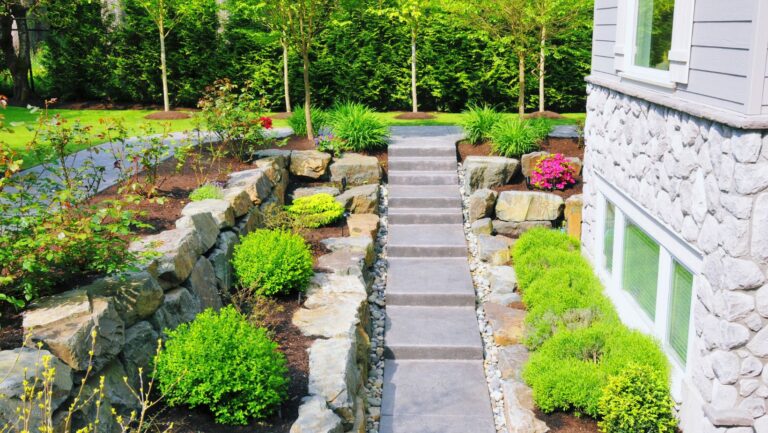Last Updated on August 19, 2024 by Deanne Robertson
It is satisfying to have the garden transformed into a setting that does not only beautify the home but also gives fresh produce straight from one’s backyard. One can get beauty and functionality in one go by growing edible plants in the landscape. When properly planned and tended to, it can bring productivity and beauty outdoors in a garden. Here’s how you can effectively add herbs, fruits, and vegetables into your landscape:.
Plan Out Your Edible Garden Layout
Before you get to planting, take a little bit of time to plan out the garden layout. Among other things, there are issues relating to the sun, soil, and space. Many edible plants are those that require full sun; in other words, your plants should have at least six to eight hours of sunlight directly hitting them daily. Observe your garden throughout the day for the brightest spots.
First, decide on the plants based on your favorite food and the climate of the place. Herbs like basil, rosemary, and thyme do very well in sunny spots in a container or bed garden, while vegetables such as tomatoes, peppers, and leafy greens love full sun. Next comes the kind of fruit: strawberries, blueberries, apples—they all have special ways of growing, so their variety should be apt for your climate.
Choosing Plants for Your Space and Regional Conditions
These plants should also accord with your regional conditions and your space. Vertical gardening would be great for small gardens or even in cities, using such methods as trellises, wall planters, or even hanging baskets. It is very good for the vining vegetables like cucumbers and tomatoes or herbs such as mint and parsley.
In large gardens, one can separate the sections of vegetation type. One can have vegetables growing on raised beds, fruits on the garden beds and herb gardens on the sunniest spots. Another amazing and beautiful landscape is the inclusion of edibles with the flowering plants. For instance, you can grow some flowering herbs like chives or lavender around your flowering ornamental plants.
Companion Planting
This is the method whereby two different species of plants are grown together to benefit one another. This is a practice whereby plants are grown to improve each other’s health and promote growth and self-control over pests. For instance, marigolds planted together with tomatoes would help in keeping away some nematodes and other pests. Beans are planted near corn, which naturally supports the climbing beans as well as enhancing the nitrogen levels in the soil.
Planting certain herbs like basil with tomatoes can improve their flavor, apart from fending off pests. Carrots and radishes make good companions as the latter loosen up the soil for easy growth of carrots. Experiment with different companion plants and see for yourself; then do the proper planning in your garden.
Containers and Raised Beds
Containers and raised beds provide maximum flexibility when trying to incorporate edible plants into your landscape design. Containers can be used on patios, balconies, or even in the small garden space and are quite suitable for an urban setting. Compact tractors can significantly ease the process of preparing the soil, planting, and maintaining your edible landscape. Compact tractors are versatile and powerful enough to handle tasks such as tilling, plowing, and mowing, while being small enough to maneuver around garden beds and tight spaces. These machines can save time and effort.
Raised beds provide good drainage and can be built to raised heights, which are easy to reach, therefore creating access for as many who have mobility issues as possible. Another added advantage is that they get much warmer in spring, therefore increasing the growing season. With a raised bed, you have more control over the quality of the soil; hence you would ensure optimal conditions for the plants.
Soil Health and Watering
Healthy plants producing edible material have healthy soil. Add compost and organic materials to your soil to improve its structure and fertility. Test regularly to assure the proper pH and levels of nutrients your plants need to thrive.
Adequate Watering—Healthy plants are less prone to issues. Most edible plants require consistent moisture but not waterlogging. Drip irrigation systems or soaker hoses can efficiently deliver directly applied water and save on wastage. Mulching around plants retains soil moisture, suppresses weeds, and modulates soil temperature.
Pest and Disease Management
Always keep a check on your garden for any infestation or diseases. After that, organically control these unwanted insects or other pests by beneficial insects like ladybugs or organic insecticidal soaps. Never use any pesticides because they kill good organisms as well and contaminate your produce.
This can also avoid diseases and problems with pests by spacing the plants appropriately and changing their locations. Change crops year after year. It reduces the chance of diseases and pests in the soil. Provide enough air around the plants that will avoid fungal infection and other infections.
Time to Harvest and Enjoy
Probably one of the biggest rewards for including edibles in the landscape is being able to harvest fresh produce. Know when each plant should be picked to enjoy optimum flavor and quality. Most herbs and vegetables benefit from regular picking since it encourages further growth; it also prevents overripe or bolting conditions.
Add edible plants to your landscapes for beautiful views in the garden, complemented by the freshest and savory ingredients for one’s own foods. Proper layout and plant choice combined with good care of the soil bring out a lush and productive garden and increase pleasures for both outdoor and dining spaces. Grow your own food with pride and be able to enjoy the beauty with a functioning garden.





